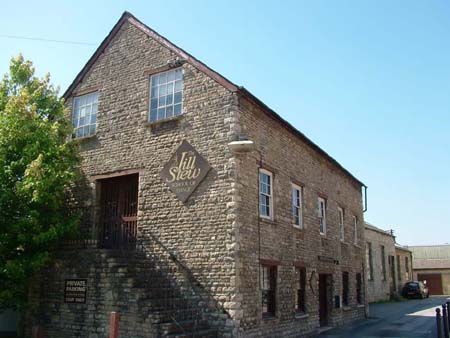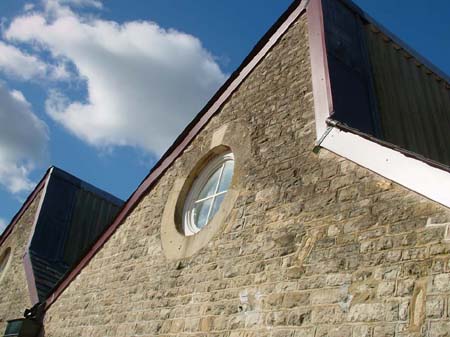Bridge Street Mill
Situation
In the centre of Witney on the east side of Bridge Street, on
the north bank of the River Windrush.
Physical structure
Bridge Street Mill was made up of a range of different stone and
brick buildings that grew up gradually over time, the earliest
mill building here probably being of an early 19th century date.
These buildings included a square-shaped chimney stack
associated with the steam engine and a small office as well as
wool processing units.
In 1899 a nine-bay fašade, which included three Jacobean style
gables, was built (possibly erected by the Witney builder
William Cantwell) which nicely screened the mixture of earlier
buildings from Bridge Street and gave it a uniform appearance
[1]. The complex was quite large, the Cotswold stone buildings
that ran south-east from the street being about 280 feet long.
The boiler house and engine were sited near to the mill
entrance, power being transmitted to different areas of the mill
by means of shafting and belt drives [2].
 Bridge Street Mill, former mill building at the rear of the
premises.
Since its closure in 1975 many of the mill buildings are still
occupied by industrial and business units, although some parts
were demolished including the stone-built chimney [3]. The part
of the building fronting Bridge Street was converted into flats
and offices in 2004. In February 2005 the long weaving sheds
that still existed behind were demolished.
Owners
 Bridge Street Mill, gable ends of weaving sheds.
William Smith owned Bridge Street Mill from sometime in the
1860s and started production here around 1866. He expanded the
business and introduced steam power here at an early stage
having already been the first to install steam-powered machinery
in Witney at his premises on the High Street.
In the 1920s Smiths merged with J.N. Philips of Manchester to
form Messrs W. Smith & J.N. Philips, who were themselves taken
over in 1967. After several changes of ownership Bridge Street
Mill (along with Crawley Mill) was acquired by Moderna Ltd of
Halifax, Yorkshire, who finally closed it in 1975 [5].
What was the site used for?
Chiefly a spinning and weaving mill, apparently producing up to
450,000 blankets a year towards the end of its working life.
Initially mops were a major product line but these had
apparently ceased to be made by the 1930s [6]. From the 1950s
onwards, new techniques were introduced including bullet, rapier
and air-jet looms and needlepunch technology. The older shuttle
looms were however retained until the mill closed.
During the war the Government's policy of concentration in
industry led to the Bridge Street site being taken off blanket
making and used for other purposes. During this time some of
their looms and their staff were transferred to Charles Early
and Co. at Witney Mill.
Clare Sumner
|



